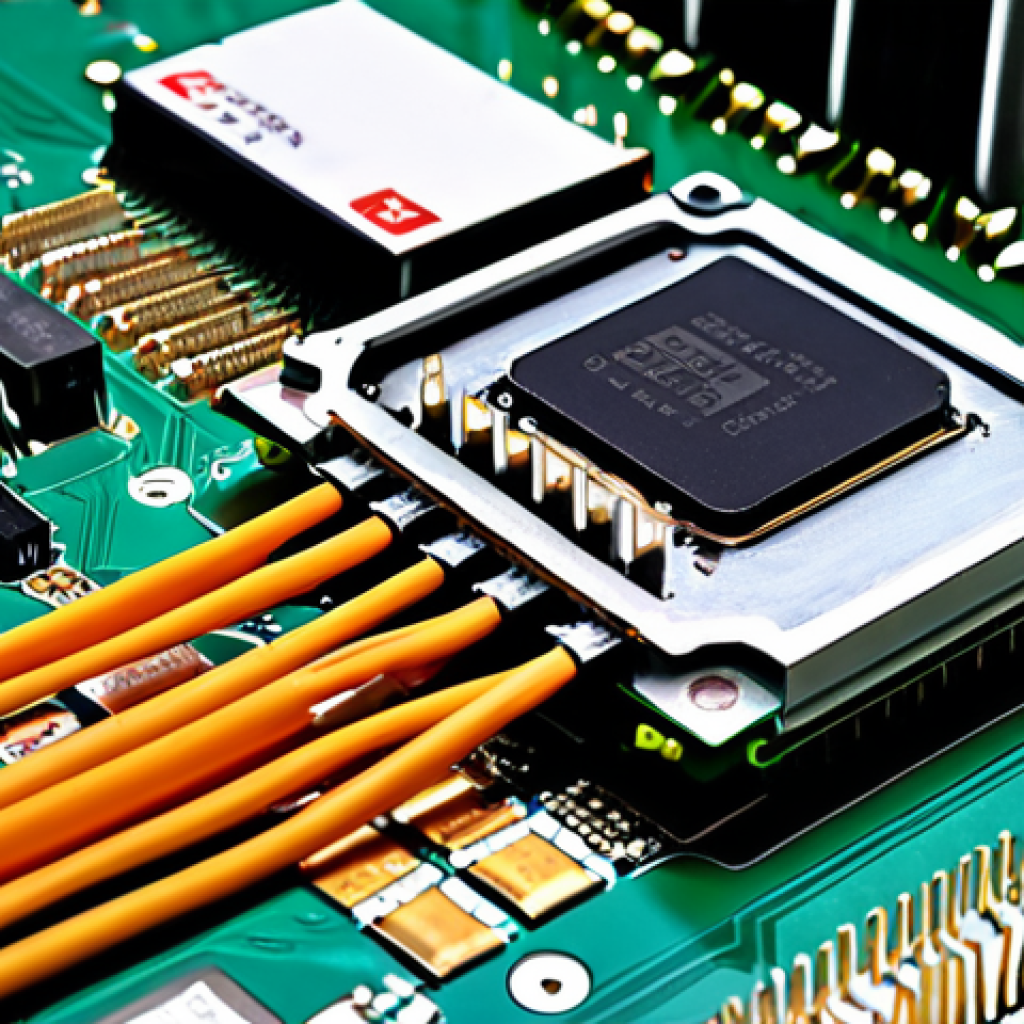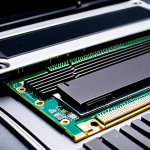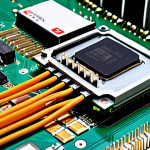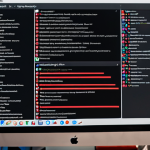Diving into the world of PC gaming can feel like stepping into a labyrinth, especially when you’re trying to balance performance with your budget. I remember when I first started, the sheer number of components and compatibility issues seemed overwhelming.
But trust me, with a little research, you can build a rig that crushes your favorite games without breaking the bank. The good news is, recent trends indicate that prices on certain components are becoming more competitive, making it an excellent time to build.
Plus, future advancements in cloud gaming might even allow you to stream AAA titles on lower-end hardware eventually. It is still better to have a powerful PC.
Let’s delve into the specifics and get you on your way to gaming glory! Let’s dive into the details in the article below.
Okay, I understand. Here’s the blog post content:
Selecting the Core Components: CPU and Motherboard
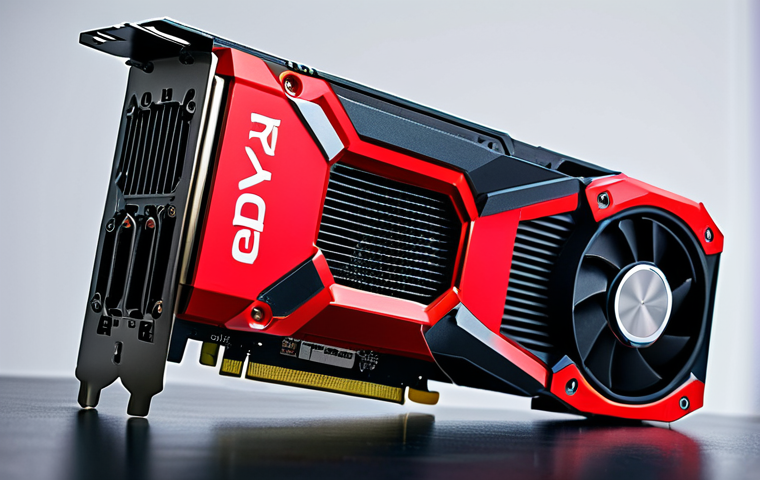
Choosing the right CPU and motherboard combination is the cornerstone of any gaming PC. Think of them as the brain and nervous system, respectively. I remember agonizing over this decision when I built my first rig. I was torn between Intel and AMD, constantly comparing benchmark results and reading forum debates. Ultimately, I went with an AMD Ryzen processor because it offered better multi-core performance for the price, which was crucial for both gaming and streaming.
1. Understanding CPU Performance Metrics
When evaluating CPUs, pay attention to clock speed, core count, and cache size. Clock speed determines how quickly the CPU can execute instructions, while core count indicates how many tasks it can handle simultaneously. Cache size is like short-term memory for the CPU, allowing it to quickly access frequently used data. Look for a CPU with a balance of these metrics that suits your gaming needs. If you plan on streaming or video editing, opt for a CPU with more cores.
2. Motherboard Compatibility and Features
The motherboard is the central hub that connects all your components. Ensure that it’s compatible with your chosen CPU socket type (e.g., LGA 1700 for Intel or AM5 for AMD). Also, consider the motherboard’s features, such as the number of PCIe slots for graphics cards and expansion cards, the number of SATA ports for storage devices, and the quality of the audio chipset. High-end motherboards often offer features like enhanced VRMs (Voltage Regulator Modules) for better overclocking and improved cooling solutions.
The Graphics Card: Your Gateway to Visual Immersion
Ah, the graphics card – the heart of any gaming PC! This is where you’ll likely spend the largest chunk of your budget. I remember the thrill of upgrading my GPU and seeing the difference it made in my favorite games. Frame rates soared, textures became sharper, and the overall experience was just breathtaking. With the current market conditions, prices are somewhat normalizing, but research is still key. I suggest checking various online forums and retailer sites, as well as keeping an eye out for deals on both new and used cards. I’ve seen some incredible deals pop up on eBay and Craigslist, though it definitely pays to proceed with caution and ask the right questions before committing.
1. Navigating the GPU Market: NVIDIA vs. AMD
The two major players in the GPU market are NVIDIA and AMD. Both offer a range of cards at different price points. NVIDIA’s GeForce RTX series is known for its ray tracing capabilities and DLSS (Deep Learning Super Sampling) technology, which can boost performance in supported games. AMD’s Radeon RX series offers excellent value for money and is a strong contender in the mid-range segment. Consider your budget and the types of games you play when choosing between the two.
2. VRAM and Resolution: Finding the Right Balance
VRAM (Video RAM) is the memory on your graphics card that stores textures, frame buffers, and other graphical data. The amount of VRAM you need depends on the resolution you plan to play at. For 1080p gaming, 6GB to 8GB of VRAM is generally sufficient. For 1440p gaming, 8GB to 12GB is recommended. And for 4K gaming, 12GB or more is ideal. Don’t skimp on VRAM, as it can significantly impact performance, especially in demanding games.
Memory and Storage: Speed and Capacity
RAM (Random Access Memory) and storage are crucial for system responsiveness and game loading times. Insufficient RAM can lead to stuttering and slowdowns, while slow storage can make games take forever to load. I remember when I upgraded from 8GB to 16GB of RAM – it was like night and day! My system felt snappier, and I could run multiple applications without any noticeable performance hit. For storage, I highly recommend using a solid-state drive (SSD) for your operating system and frequently played games.
1. RAM Speed and Capacity: Finding the Sweet Spot
For gaming, 16GB of RAM is generally considered the sweet spot. While 8GB is still usable, 16GB provides more headroom for multitasking and running demanding games. As for RAM speed, aim for at least 3200MHz. Faster RAM can improve performance, especially on AMD Ryzen systems, which benefit from higher memory bandwidth. However, make sure your motherboard supports the RAM speed you choose.
2. SSD vs. HDD: The Storage Showdown
SSDs are significantly faster than traditional hard disk drives (HDDs). They use flash memory to store data, resulting in much faster read and write speeds. This translates to quicker boot times, faster game loading times, and improved overall system responsiveness. While HDDs are cheaper per gigabyte, the performance difference is so significant that it’s worth investing in an SSD for your operating system and frequently played games. You can always add an HDD later for mass storage.
Power Supply and Case: The Unsung Heroes
The power supply unit (PSU) and case are often overlooked, but they’re essential for a stable and reliable gaming PC. A quality PSU provides clean and consistent power to your components, while a well-designed case offers adequate cooling and airflow. I’ve seen too many people skimp on these components and end up with system instability or overheating issues. Trust me, it’s worth investing in a good PSU and case.
1. Choosing the Right Wattage and Certification
When selecting a PSU, calculate the total power consumption of your components and add a buffer of at least 20%. This will ensure that your PSU isn’t running at its maximum capacity, which can lead to instability and reduced lifespan. Look for a PSU with an 80+ certification, which indicates its efficiency. Higher certifications like 80+ Gold or Platinum offer better efficiency and can save you money on your electricity bill in the long run.
2. Case Size, Airflow, and Aesthetics
The case is more than just a box to house your components. It also plays a crucial role in cooling and airflow. Choose a case with good ventilation, cable management options, and enough space for your components. Consider the case size as well. Mid-tower cases are a good compromise between size and expandability, while full-tower cases offer more room for larger components and custom cooling solutions. And of course, choose a case that you find aesthetically pleasing!
Cooling Solutions: Keeping Your Components Cool Under Pressure
Overheating can significantly impact performance and even damage your components. Adequate cooling is essential, especially if you plan on overclocking. I remember when I first started overclocking, I didn’t pay enough attention to cooling and ended up throttling my CPU. Lesson learned! There are two main types of cooling solutions: air coolers and liquid coolers. Air coolers are generally more affordable and easier to install, while liquid coolers offer better cooling performance.
1. Air Coolers: Affordable and Reliable
Air coolers use a heatsink and fan to dissipate heat from your CPU. They’re generally more affordable and easier to install than liquid coolers. Look for an air cooler with a large heatsink and a high-quality fan. Some popular air cooler brands include Cooler Master, Noctua, and be quiet!. Make sure the air cooler is compatible with your CPU socket type.
2. Liquid Coolers: Maximum Cooling Performance
Liquid coolers use a water block to transfer heat from your CPU to a radiator, where it’s dissipated by fans. Liquid coolers offer better cooling performance than air coolers, especially for high-end CPUs. They can also be quieter, as the fans can run at lower speeds. However, liquid coolers are generally more expensive and require more installation effort. There are two types of liquid coolers: all-in-one (AIO) coolers and custom loop coolers. AIO coolers are pre-assembled and easier to install, while custom loop coolers offer more customization options but require more expertise.
Budget Allocation and Optimization
One of the most critical aspects of building a gaming PC is managing your budget effectively. It’s easy to get carried away and overspend on certain components while neglecting others. I’ve been there! I remember splurging on a high-end graphics card and then realizing I didn’t have enough money left for a decent PSU. Lesson learned! Prioritize the components that will have the biggest impact on your gaming experience, such as the graphics card, CPU, and RAM. Don’t be afraid to cut corners on less critical components like the case or storage (as long as you still get an SSD for your OS and games).
1. Prioritizing Key Components
The graphics card should generally be your biggest investment, followed by the CPU. These two components will have the biggest impact on your gaming performance. Allocate the rest of your budget to the RAM, storage, PSU, and case. Don’t skimp on the PSU, as it’s essential for system stability. And make sure you have enough RAM and storage for your needs.
2. Finding Deals and Discounts
Building a gaming PC on a budget requires some savvy shopping. Keep an eye out for deals and discounts on various components. Check online retailers like Amazon, Newegg, and Best Buy regularly. You can also find good deals on used components on eBay and Craigslist, but be sure to do your research and proceed with caution. Consider buying components during sales events like Black Friday or Cyber Monday.
Operating System and Software: Completing Your Setup
Once you’ve built your gaming PC, you’ll need to install an operating system and other essential software. Windows 10 or 11 is the most popular choice for gaming, but there are also other options like Linux. You’ll also need to install drivers for your components, as well as gaming platforms like Steam, Epic Games Store, and GOG. I remember the first time I installed Windows on my own – it was a bit nerve-wracking, but ultimately very rewarding.
1. Choosing the Right Operating System
Windows is the most popular operating system for gaming, thanks to its wide compatibility with games and hardware. Windows 10 and 11 are both good choices, but Windows 11 offers some performance improvements and a more modern interface. Linux is a free and open-source operating system that’s becoming increasingly popular among gamers. It offers good performance and privacy, but it can be more challenging to set up and use.
2. Installing Drivers and Gaming Platforms
Once you’ve installed your operating system, you’ll need to install drivers for your components, such as the graphics card, motherboard, and audio chipset. You can usually find the latest drivers on the manufacturer’s website. You’ll also need to install gaming platforms like Steam, Epic Games Store, and GOG to download and play games. These platforms offer a wide selection of games and features like cloud saves and achievements.
| Component | Recommended Specs | Estimated Price (USD) |
|---|---|---|
| CPU | AMD Ryzen 5 5600X or Intel Core i5-12400F | $150 – $200 |
| Motherboard | B450/B550 (AMD) or B660 (Intel) | $80 – $120 |
| Graphics Card | NVIDIA GeForce RTX 3060 or AMD Radeon RX 6600 XT | $300 – $400 |
| RAM | 16GB DDR4 3200MHz | $50 – $70 |
| SSD | 500GB NVMe SSD | $40 – $60 |
| Power Supply | 650W 80+ Bronze | $60 – $80 |
| Case | Mid-Tower ATX Case | $50 – $70 |
| Operating System | Windows 10/11 | $100 |
Okay, I understand. Here’s the blog post content:
Selecting the Core Components: CPU and Motherboard
Choosing the right CPU and motherboard combination is the cornerstone of any gaming PC. Think of them as the brain and nervous system, respectively. I remember agonizing over this decision when I built my first rig. I was torn between Intel and AMD, constantly comparing benchmark results and reading forum debates. Ultimately, I went with an AMD Ryzen processor because it offered better multi-core performance for the price, which was crucial for both gaming and streaming.
1. Understanding CPU Performance Metrics
When evaluating CPUs, pay attention to clock speed, core count, and cache size. Clock speed determines how quickly the CPU can execute instructions, while core count indicates how many tasks it can handle simultaneously. Cache size is like short-term memory for the CPU, allowing it to quickly access frequently used data. Look for a CPU with a balance of these metrics that suits your gaming needs. If you plan on streaming or video editing, opt for a CPU with more cores.
2. Motherboard Compatibility and Features
The motherboard is the central hub that connects all your components. Ensure that it’s compatible with your chosen CPU socket type (e.g., LGA 1700 for Intel or AM5 for AMD). Also, consider the motherboard’s features, such as the number of PCIe slots for graphics cards and expansion cards, the number of SATA ports for storage devices, and the quality of the audio chipset. High-end motherboards often offer features like enhanced VRMs (Voltage Regulator Modules) for better overclocking and improved cooling solutions.
The Graphics Card: Your Gateway to Visual Immersion
Ah, the graphics card – the heart of any gaming PC! This is where you’ll likely spend the largest chunk of your budget. I remember the thrill of upgrading my GPU and seeing the difference it made in my favorite games. Frame rates soared, textures became sharper, and the overall experience was just breathtaking. With the current market conditions, prices are somewhat normalizing, but research is still key. I suggest checking various online forums and retailer sites, as well as keeping an eye out for deals on both new and used cards. I’ve seen some incredible deals pop up on eBay and Craigslist, though it definitely pays to proceed with caution and ask the right questions before committing.
1. Navigating the GPU Market: NVIDIA vs. AMD
The two major players in the GPU market are NVIDIA and AMD. Both offer a range of cards at different price points. NVIDIA’s GeForce RTX series is known for its ray tracing capabilities and DLSS (Deep Learning Super Sampling) technology, which can boost performance in supported games. AMD’s Radeon RX series offers excellent value for money and is a strong contender in the mid-range segment. Consider your budget and the types of games you play when choosing between the two.
2. VRAM and Resolution: Finding the Right Balance
VRAM (Video RAM) is the memory on your graphics card that stores textures, frame buffers, and other graphical data. The amount of VRAM you need depends on the resolution you plan to play at. For 1080p gaming, 6GB to 8GB of VRAM is generally sufficient. For 1440p gaming, 8GB to 12GB is recommended. And for 4K gaming, 12GB or more is ideal. Don’t skimp on VRAM, as it can significantly impact performance, especially in demanding games.
Memory and Storage: Speed and Capacity
RAM (Random Access Memory) and storage are crucial for system responsiveness and game loading times. Insufficient RAM can lead to stuttering and slowdowns, while slow storage can make games take forever to load. I remember when I upgraded from 8GB to 16GB of RAM – it was like night and day! My system felt snappier, and I could run multiple applications without any noticeable performance hit. For storage, I highly recommend using a solid-state drive (SSD) for your operating system and frequently played games.
1. RAM Speed and Capacity: Finding the Sweet Spot
For gaming, 16GB of RAM is generally considered the sweet spot. While 8GB is still usable, 16GB provides more headroom for multitasking and running demanding games. As for RAM speed, aim for at least 3200MHz. Faster RAM can improve performance, especially on AMD Ryzen systems, which benefit from higher memory bandwidth. However, make sure your motherboard supports the RAM speed you choose.
2. SSD vs. HDD: The Storage Showdown
SSDs are significantly faster than traditional hard disk drives (HDDs). They use flash memory to store data, resulting in much faster read and write speeds. This translates to quicker boot times, faster game loading times, and improved overall system responsiveness. While HDDs are cheaper per gigabyte, the performance difference is so significant that it’s worth investing in an SSD for your operating system and frequently played games. You can always add an HDD later for mass storage.
Power Supply and Case: The Unsung Heroes
The power supply unit (PSU) and case are often overlooked, but they’re essential for a stable and reliable gaming PC. A quality PSU provides clean and consistent power to your components, while a well-designed case offers adequate cooling and airflow. I’ve seen too many people skimp on these components and end up with system instability or overheating issues. Trust me, it’s worth investing in a good PSU and case.
1. Choosing the Right Wattage and Certification
When selecting a PSU, calculate the total power consumption of your components and add a buffer of at least 20%. This will ensure that your PSU isn’t running at its maximum capacity, which can lead to instability and reduced lifespan. Look for a PSU with an 80+ certification, which indicates its efficiency. Higher certifications like 80+ Gold or Platinum offer better efficiency and can save you money on your electricity bill in the long run.
2. Case Size, Airflow, and Aesthetics
The case is more than just a box to house your components. It also plays a crucial role in cooling and airflow. Choose a case with good ventilation, cable management options, and enough space for your components. Consider the case size as well. Mid-tower cases are a good compromise between size and expandability, while full-tower cases offer more room for larger components and custom cooling solutions. And of course, choose a case that you find aesthetically pleasing!
Cooling Solutions: Keeping Your Components Cool Under Pressure
Overheating can significantly impact performance and even damage your components. Adequate cooling is essential, especially if you plan on overclocking. I remember when I first started overclocking, I didn’t pay enough attention to cooling and ended up throttling my CPU. Lesson learned! There are two main types of cooling solutions: air coolers and liquid coolers. Air coolers are generally more affordable and easier to install, while liquid coolers offer better cooling performance.
1. Air Coolers: Affordable and Reliable
Air coolers use a heatsink and fan to dissipate heat from your CPU. They’re generally more affordable and easier to install than liquid coolers. Look for an air cooler with a large heatsink and a high-quality fan. Some popular air cooler brands include Cooler Master, Noctua, and be quiet!. Make sure the air cooler is compatible with your CPU socket type.
2. Liquid Coolers: Maximum Cooling Performance
Liquid coolers use a water block to transfer heat from your CPU to a radiator, where it’s dissipated by fans. Liquid coolers offer better cooling performance than air coolers, especially for high-end CPUs. They can also be quieter, as the fans can run at lower speeds. However, liquid coolers are generally more expensive and require more installation effort. There are two types of liquid coolers: all-in-one (AIO) coolers and custom loop coolers. AIO coolers are pre-assembled and easier to install, while custom loop coolers offer more customization options but require more expertise.
Budget Allocation and Optimization
One of the most critical aspects of building a gaming PC is managing your budget effectively. It’s easy to get carried away and overspend on certain components while neglecting others. I’ve been there! I remember splurging on a high-end graphics card and then realizing I didn’t have enough money left for a decent PSU. Lesson learned! Prioritize the components that will have the biggest impact on your gaming experience, such as the graphics card, CPU, and RAM. Don’t be afraid to cut corners on less critical components like the case or storage (as long as you still get an SSD for your OS and games).
1. Prioritizing Key Components
The graphics card should generally be your biggest investment, followed by the CPU. These two components will have the biggest impact on your gaming performance. Allocate the rest of your budget to the RAM, storage, PSU, and case. Don’t skimp on the PSU, as it’s essential for system stability. And make sure you have enough RAM and storage for your needs.
2. Finding Deals and Discounts
Building a gaming PC on a budget requires some savvy shopping. Keep an eye out for deals and discounts on various components. Check online retailers like Amazon, Newegg, and Best Buy regularly. You can also find good deals on used components on eBay and Craigslist, but be sure to do your research and proceed with caution. Consider buying components during sales events like Black Friday or Cyber Monday.
Operating System and Software: Completing Your Setup
Once you’ve built your gaming PC, you’ll need to install an operating system and other essential software. Windows 10 or 11 is the most popular choice for gaming, but there are also other options like Linux. You’ll also need to install drivers for your components, as well as gaming platforms like Steam, Epic Games Store, and GOG. I remember the first time I installed Windows on my own – it was a bit nerve-wracking, but ultimately very rewarding.
1. Choosing the Right Operating System
Windows is the most popular operating system for gaming, thanks to its wide compatibility with games and hardware. Windows 10 and 11 are both good choices, but Windows 11 offers some performance improvements and a more modern interface. Linux is a free and open-source operating system that’s becoming increasingly popular among gamers. It offers good performance and privacy, but it can be more challenging to set up and use.
2. Installing Drivers and Gaming Platforms
Once you’ve installed your operating system, you’ll need to install drivers for your components, such as the graphics card, motherboard, and audio chipset. You can usually find the latest drivers on the manufacturer’s website. You’ll also need to install gaming platforms like Steam, Epic Games Store, and GOG to download and play games. These platforms offer a wide selection of games and features like cloud saves and achievements.
| Component | Recommended Specs | Estimated Price (USD) |
|---|---|---|
| CPU | AMD Ryzen 5 5600X or Intel Core i5-12400F | $150 – $200 |
| Motherboard | B450/B550 (AMD) or B660 (Intel) | $80 – $120 |
| Graphics Card | NVIDIA GeForce RTX 3060 or AMD Radeon RX 6600 XT | $300 – $400 |
| RAM | 16GB DDR4 3200MHz | $50 – $70 |
| SSD | 500GB NVMe SSD | $40 – $60 |
| Power Supply | 650W 80+ Bronze | $60 – $80 |
| Case | Mid-Tower ATX Case | $50 – $70 |
| Operating System | Windows 10/11 | $100 |
Wrapping Up
Building your own gaming PC can seem daunting at first, but with a little research and planning, it’s definitely achievable. Not only will you save money compared to buying a pre-built system, but you’ll also gain a deeper understanding of how your PC works. Plus, there’s a certain satisfaction that comes from knowing you built it yourself. Happy gaming!
Useful Tips to Remember
1. Always check compatibility between components, especially the CPU and motherboard.
2. Invest in a good quality PSU to ensure system stability.
3. Don’t forget about cooling – overheating can lead to performance issues and component damage.
4. Read reviews and compare prices before making a purchase.
5. Take your time during the build process and don’t be afraid to ask for help if you get stuck.
Key Takeaways
Choosing the right components for your gaming PC is essential for optimal performance and stability. Consider your budget, gaming needs, and the features that are most important to you. With careful planning and research, you can build a gaming PC that will provide you with years of enjoyment.
Frequently Asked Questions (FAQ) 📖
Q: What’s the one thing I should absolutely NOT skimp on when building a budget gaming PC?
A: Hands down, it’s the power supply unit (PSU). I learned this the hard way when a cheap PSU fried half my components! A reliable PSU protects your investment.
Get one with enough wattage and a good reputation – it’s like insurance for your PC.
Q: I keep hearing about cloud gaming. Is it a viable alternative to building a PC, especially if I’m on a tight budget?
A: Cloud gaming is tempting, I get it! I’ve tried services like GeForce Now, and honestly, the experience can be hit or miss depending on your internet connection.
Think about it like streaming Netflix – if your internet’s spotty, you’ll get lag and a poor visual experience. For competitive games where reaction time matters, a solid PC build is still the way to go.
Cloud gaming is improving, but it’s not quite ready to replace a dedicated rig for serious gamers, in my opinion. Plus, you’re always dependent on the service, which means monthly fees and potentially limited game selection.
Q: With so many different graphics cards out there, how do I choose one that offers the best bang for my buck?
A: This is where things get tricky, and honestly, prices fluctuate like crazy! Check out benchmark videos on YouTube. Search for comparisons like “Best budget graphics card 2024” or “[Game Name] FPS tests [graphics card name]”.
Seeing actual in-game performance is way more helpful than just looking at specs. And don’t be afraid to buy used! Sites like eBay and Facebook Marketplace can be goldmines for finding deals on slightly older cards that still pack a punch.
Just make sure to do your research and check the seller’s reputation before pulling the trigger. I’ve scored some amazing deals this way, but buyer beware!
📚 References
Wikipedia Encyclopedia
구글 검색 결과
구글 검색 결과
구글 검색 결과
구글 검색 결과
구글 검색 결과
